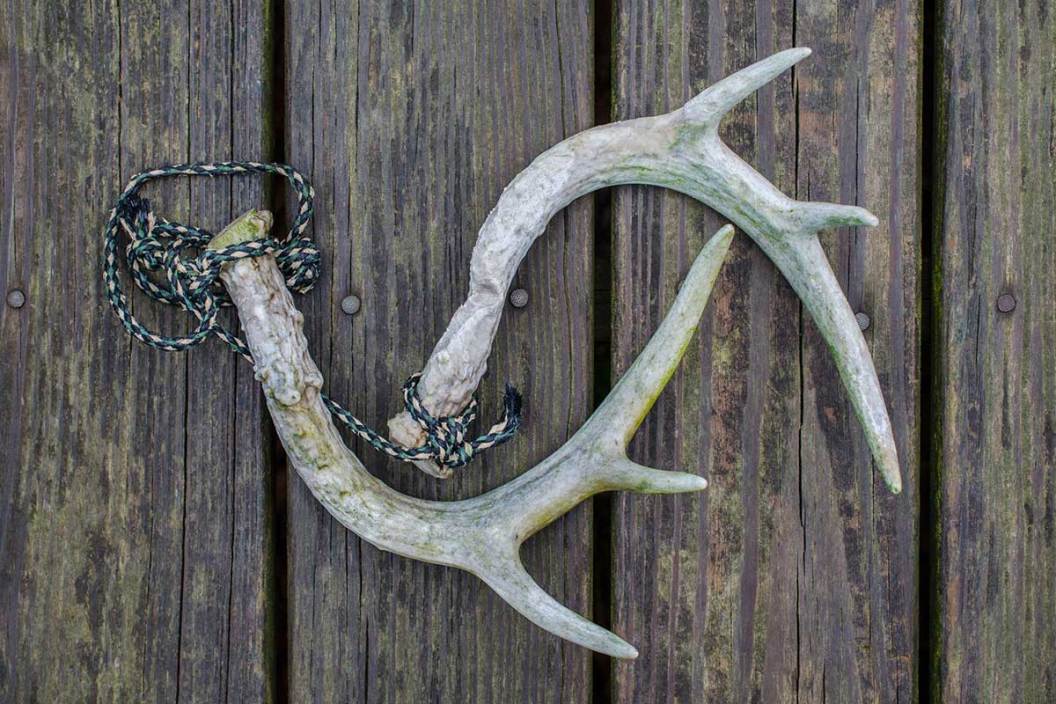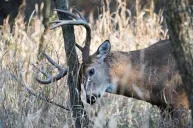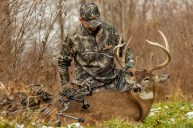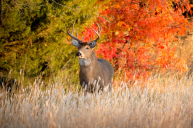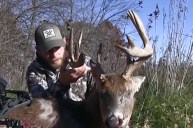If you have not tried antler rattling before, you are missing out.
Rattling a set of deer antlers can be just the thing to get that big buck to come investigate what is going on at your stand. Antler rattling looks simple at first, but there is actually a lot that goes into it. Many factors have to stack just right for you to be able to actually bring a buck in close without scaring him off.
It's time to go over what you need to know about antler rattling, and share a few things to remember when you try it out.
What is Antler Rattling?
In a nutshell, antler rattling is when you use some sort of rattling device to mimic two deer fighting. The theory is, when you mimic two deer fighting, they are fighting over a hot doe or dominance. So a nearby buck will want to come to check it out. This buck is trying to see if he is a more dominant buck than the two fighting. If he feels like he is, he would fight or run off the two bucks to show his dominance or take the doe.
Since there are not any bucks fighting, they often come near you and look around for the two deer they heard. This is when you get the perfect opportunity to take a shot at him. Although rattling does not always bring in giant bucks, if it did that is all we would do. Any curious buck may come by to check it out.
There are a few things that we can do to make sure our rattling is as effective as possible. It is easy to go out in the woods and bang around a couple of antlers, but a little strategy goes a long way, so let's take a look at our first tip.
Tip 1: Know When to Rattle
Rattling antlers does not work the same way throughout the entire season. It may not work at all at the very start of the season, and the same goes for the very end of the season.
Rattling really comes into its own during the middle of the season when rutting bucks are the most aggressive. Hunters need to pay attention to the rut phases and know which one they are currently in to rattle effectively.
During the early season, bucks are not really going full force with their fighting over potential mates. Many of them are merely bucks sparring, and you can rattle lightly to mimic a sparring session. Typically you want to rattle for about 5 to 10 minutes during this time, and then wait an hour in between sessions. Early season rattling is not the most successful, so if you are having problems you should try other calling methods.
When the peak rut starts to ramp up, bucks are going to get more aggressive and be more responsive to antler rattling. The end of the pre-rut and into the full rut is a great time to rattle in a buck. This is when you want to get aggressive with your rattling. At the very start of the rut, bucks are going to be fighting for those first does that come into estrus. So make your rattling aggressive and do a 3- to 5-minute session every 45 minutes or so.
As the rut winds down so does buck aggressiveness. You can still rattle in bucks during the second rut and post-rut, but you want to tone it down a little. The second rut is a good time to rattle because mature bucks are fighting for the last does in estrus, so you keep it aggressive, just not as aggressive as the full rut.
The time of day, not just the time of year, is also important for rattling. It turns out that rattling is not super effective during the middle of the day. This is partially due to the whitetail's crepuscular behavior, meaning they are active mostly in the mornings and evenings, before and after daylight. Rattling is most effective in the mornings and evenings. Many deer hunters say they have had success rattling during both periods, but some studies have shown that rattling in the morning is the best.
Tip 2: Make It Realistic
One of the most important things to consider when rattling is realism. When you rattle, you want it to sound like actual deer. I recommend watching a few videos of actual deer fighting and paying close attention to the sounds they make. You actually have to rattle a lot slower than you may think at first.
Deer will clash their antlers, and then stay locked up for a few seconds before one of them makes a move in another direction. Your rattling should not be constant clashing. Make a clash followed by a few seconds of silence, and then another clash. You should vary the length of the silence so it is not always the same.
Another thing that you can do to make your rattling more realistic is include a decoy. Deer decoys are not used all that often, but they can be very effective. The reason you may want to use one when you are rattling is because bucks are going to be looking for the deer making the noise. If they see one buck decoy, they may assume he won and challenge him. With the correct decoy placement, that challenge could bring a buck within 20 yards.
Tip 3: Make Sure You Are Prepared
Generally rattling takes two hands. So when you are rattling, you have to keep your eyes peeled and look for bucks in every direction. You definitely do not want a shooter buck to sneak up behind you while you still have those antlers in your hand.
While you are rattling, be sure to have a plan for how you are going to put them down safely and quietly, and how you are going to pick up your weapon with minimal movement.
The method you choose to rattle will also have a big effect on this. If you are rattling two sheds together, then you need to hang them somewhere while you get your bow or rifle. On the other hand if you are using a rattle bag, you can simply slide those into a vest pocket with little to no movement and almost instantly be ready to shoot.
Real antlers normally sound the best, but there are a few options when it comes to rattling methods. Let's take a quick look at a couple and why you may want to use them.
- Rattle Bag - This device is small and easy to use but it is harder to make louder rattling sequences with.
- Black Rack - Black Rack is made by the Deer Society. They are nearly as big as real antlers, but they are much easier to use and sound very realistic.
- Classic Pack Rack - the Pack Rack is made of two small circular bits of plastic material that can be clashed and rubbed together. The Pack Rack is easy to transport and sounds fairly good.
- Sheds on a Rope - This is an old trick that hunters have used for a long time, but the idea is that you tie two or three sheds together at the end of a rope, then you let the rope dangle from your tree stand and work it by pulling it up and down. This makes a more realistic sound on the ground and is easy to let go of when you need to shoot.
Antler rattling while deer hunting takes some practice, but if you can get it down, it's a seriously advantageous method of calling in deer worthy of tagging.
Products featured on Wide Open Spaces are independently selected by our writers and editors. However, when you buy something through our links, we may earn a commission.
NEXT: TYPICAL VS NON-TYPICAL DEER: AN EXPLANATION FOR NEWER HUNTERS
